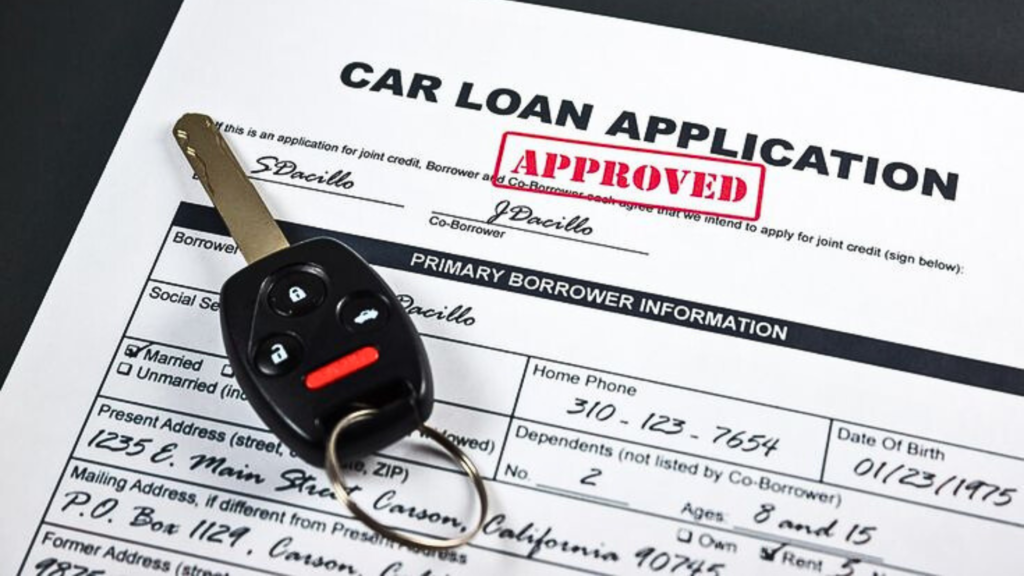Are you going through a tough time financially and looking to sell your car with your auto loan still active? We might be able to guide you through this. When a borrower transfers the obligation of their auto loan to another person—like a spouse, family member, or even a friend—the problem of transferring a car loan to another person arises.
Although it’s possible to do so, but the process requires careful consideration and approval from the lender. We’ll now explore the steps and requirements of transferring a car loan and what you need to know before moving.
What Is a Car Loan Transfer?
A car loan transfer happens when a borrower transfers the responsibility for paying off the car loan legally to a new borrower. This can happen for many reasons. It could be because of financial difficulties, selling the car to someone else, or just transferring ownership to a family member.
Transferring a car loan to someone else is more complicated than you think. It requires the lender’s approval, and the new borrower meets certain conditions to ensure they are qualified to take over the loan.

For example, the lender will review the new borrower’s creditworthiness, just like when the loan was first issued. Additionally, the loan and the vehicle ownership must be in line with local laws and financial regulations, including rules set by the RTO (Regional Transport Office) depending on the country you’re in.
ALSO READ: Can You Get a Loan Using Your Car As Collateral?
Tips on Transferring a Car Loan
It is essential to be prepared in order to successfully transfer a car loan, as the process is not entirely straightforward. Here are a few tips to help guide you through the process of transferring a car loan:
- Contact Your Lender: The first step is to contact your lender. You need to do this so you can confirm if your financial institution allows car loan transfers and what specific requirements are required, as not all of them do.
- Assess the New Borrower’s Finances: Just like any borrower, the person taking over the car loan must be eligible. Lenders will check their credit score, debt-to-income ratio, and their overall financial stability. If they don’t meet the requirements, the transfer might be denied.

- Understand the Financial and Legal Consequences: You want to make sure the car insurance policy is updated to reflect the new owner. Plus, other legal factors like transferring ownership of the vehicle in line with state or regional laws (for example, RTO transfer requirements) need to be considered.
- Be Ready to Pay Transfer Fees: Many lenders often charge fees for processing car loan transfers. It’s important to factor this into your decision and be fully aware of how much it will cost to complete the transfer process.
- Review the Loan Terms: When transferring a car loan, the terms may change slightly, depending on the new borrower’s financial situation. So be sure to review the interest rates, monthly payments, and loan term with the lender to avoid any surprises.
Easy Steps on How to Transfer a Car Loan to Another Person
Now that you understand the concept, let’s go over the step-by-step guide on how to transfer a car loan to another person or party:
1. Get Lender Approval
The first and most important step is to reach out to your lender to request permission for a car loan transfer. Many lenders may not allow such a transfer, but those who do usually require a formal application from the new borrower. If it is approved, they will carry out the necessary credit checks and other evaluations to make sure the new borrower is capable of managing the loan.
2. Submit the Necessary Documents
The new borrower will need to submit several documents to the lender. These documents typically include proof of identity, proof of income, and any other documentation required by the lender to assess the applicant’s creditworthiness. The original borrower may also need to submit paperwork, like a formal loan transfer request.

3. Transfer of Car Ownership
Once the loan transfer is approved, the new borrower will legally acquire the vehicle. This process involves updating the car’s title, registering it with the local DMV (Department of Motor Vehicles), and, in some countries, following specific RTO requirements. Both parties will then sign the title, and the new owner must pay any necessary transfer fees or taxes.
4. Update the Car Insurance Policy
The new borrower must update the car insurance policy to reflect their ownership of the vehicle. This is because driving the car without valid insurance documents could result in fines, penalties, or worse, in case an accident happens. After the car insurance document is updated, the lender will likely require proof of updated insurance before the transfer is finalized.
5. Pay Any Transfer Fees
Most lenders charge a fee for processing the loan transfer. So, ask about these fees early so both parties can plan for these costs. These fees may vary, but they must be paid in order for the transfer to go through smoothly.
ALSO READ: How To Buy a Car With a Pre-Approved Loan
Charges on Transferring a Car Loan to Another Person
Transferring a car loan often comes with additional charges beyond just the loan payments. Here are some of the standard charges you may run into during the process:
- Loan Transfer Fees: Many lenders will charge a flat fee to process the transfer. Depending on the lender and how complex the transfer is, this might be anywhere between $100 and $500.
- Title Transfer Fees: When you transfer the car ownership, you’ll probably have to pay a fee to the DMV or the relevant authority to update the title. These fees might range from $20 to $100, depending on the state.

- Taxes: Depending on your location, there may also be additional taxes associated with transferring the vehicle title. Just make sure to check with your local DMV or RTO for specific tax rates and rules.
- Insurance Costs: When the time comes for the new borrower to update the car insurance policy, they might be required to pay higher or lower premiums depending on their driving history and coverage needs.
Suppose you’re wondering how to transfer a car loan to a family member. In that case, it’s essential to remember that some lenders tend to be more accommodating when approving transfers between spouses or family members. However, they will still require the new borrower to meet the financial requirements to be sure they can manage the loan payments.
So whether you’re financing a car, trying to transfer a car loan, or even looking to trade in a car with a loan, knowing how to transfer a car loan to another person can save you from future headaches.

